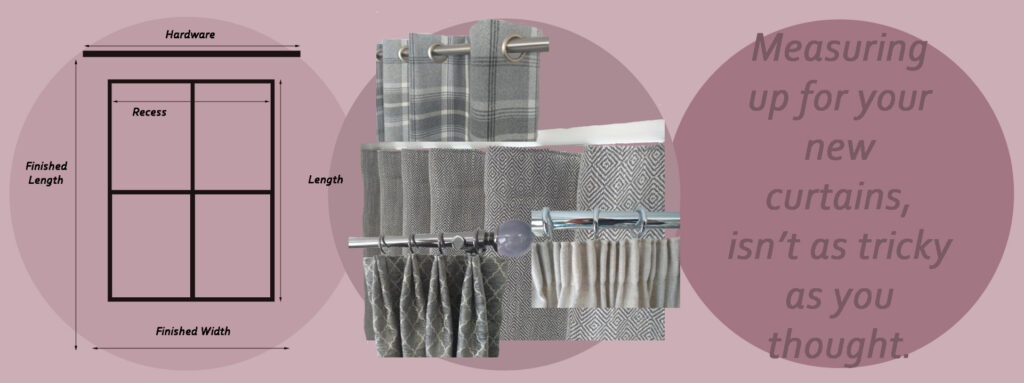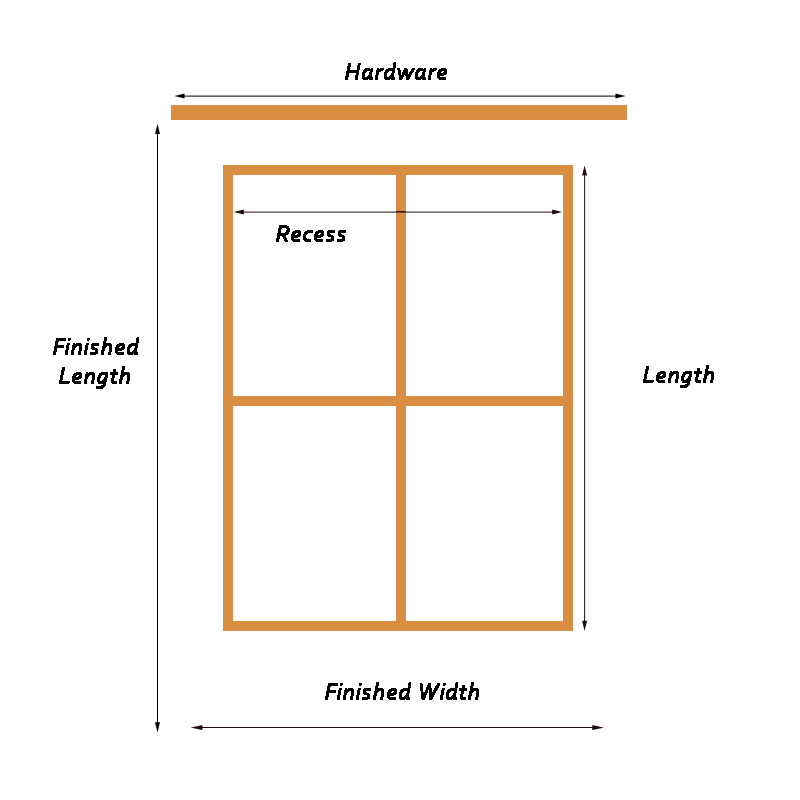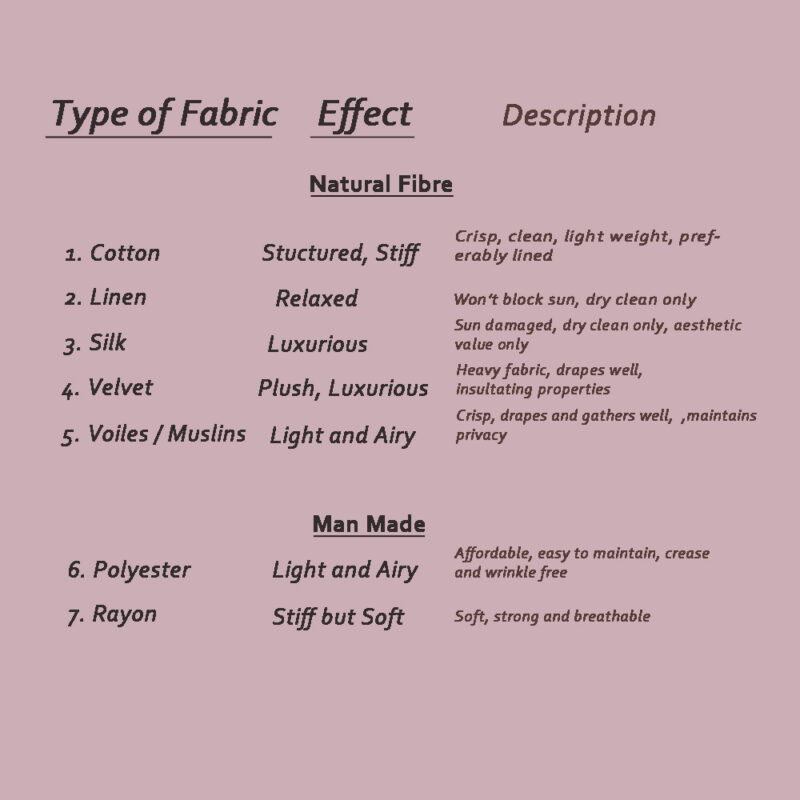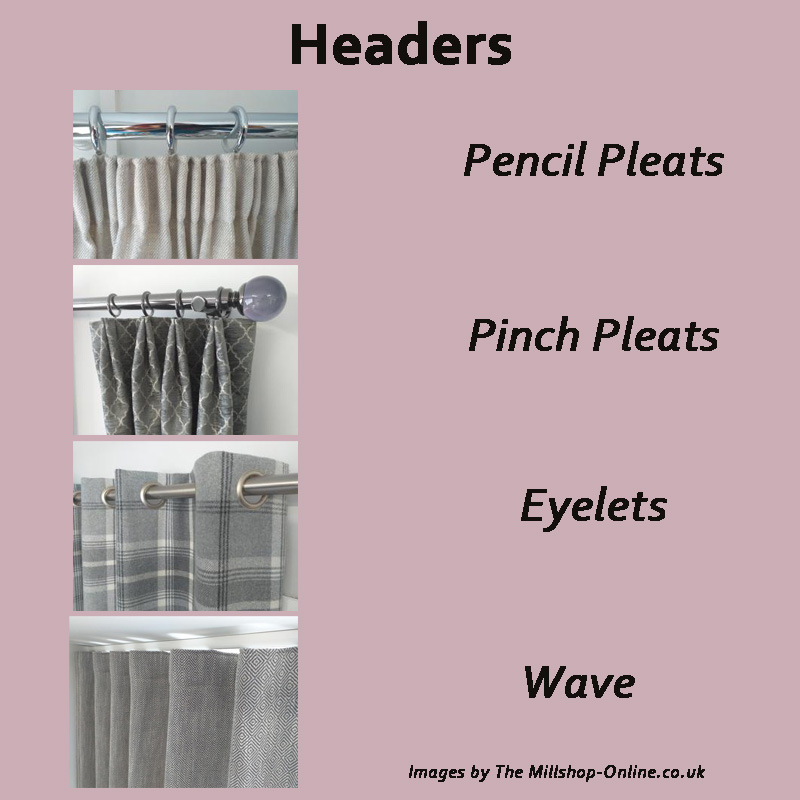Hi guys, in today’s post, we are discussing the methods used when measuring up for your new curtains. Remember to recycle and use those beautiful patterned old curtains in the other rooms of your home. Also note that this is just a guide to measuring up for your new curtains, and your curtain maker should be consulted to do all final measurements, depending on the headers you would like to use.
First off, we will explain the general terminology used.
Recess
This refers to the inside measurement of your window. This measurement is critical when opting for Roman blinds, Venetian blinds or sheers and voile curtains that will hang inside the window frame. When taking this measurement, remember to take 3 measurements; firstly the top, secondly, the middle of the window and thirdly, the bottom of the window. Always take the smallest measurement when calculating the amount of fabric needed and when ordering the hardware.
Finished Width
This measurement refers to the measure between your rod stoppers. It is taken by measuring the window, and then adding additional 15cm / 20cm on either side extending the window frame. Curtains are stacked in this additional space. Remember to allow extra space for thicker lined curtains than you would for sheers or unlined curtains.
Finished Length
This measurement refers to the distance from the bottom of your rod to the floor. Unless you wish your curtains to pool on the floor, subtract 2cm from this length. This allowance allows for easy cleaning.
Now that you have these measurements, if you aren’t reusing your old curtains, it is time to select your fabric.
Choose fabric according to the feel of the room. Decide whether it is relaxed, formal or casual etc. Fabrics must be selected to compliment and enhance the atmosphere. Below is a guide to the various fabrics and the feel it creates.
Next you need to decide on the header of your curtains. Here below are a few examples of headers, but be sure to ask your curtain maker for more. Remember, as with the type of fabric you select, the header also influences the feel of the room. Be sure to do your homework.
Pencil Pleat Curtains
An adjustable stringed tape is used to create the gathers at the top. Also known as Regus curtains, these curtains are very cost effective.
Pinch Pleat Curtains
A taped header with hand stitched pinched pleats. This creates volume and holds nicely. Very clean and regal header.
Eyelet Curtains
A very simple, but less cost effective header. Eyelets are inserted into the fabric at intervals, creating folds. Eyelets are available in a variety of finishing and sizes. These usually match the color of the rods and is size dependent.
Wave Curtains
A very clean and expensiveness header. A tape is sewn on the top which maintains the folds whether open or drawn. Special curtain hardware is required for this option. These curtains can be motorized.
As mentioned previously, there many more header options, other than these mentioned here. We are doing a post in March, detailing various types of headings and the feel it creates.
I trust that the information shared here, can assist you when measuring up for your new curtains. Be sure to check back soon, when we discuss Curtain Headers and Curtain Hardware. Until next time…




